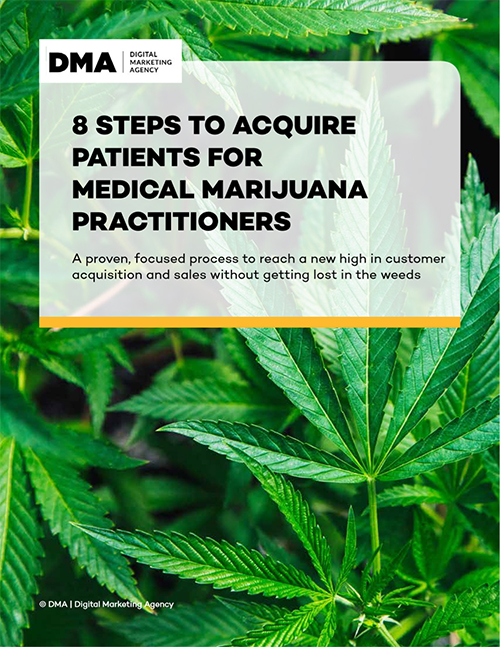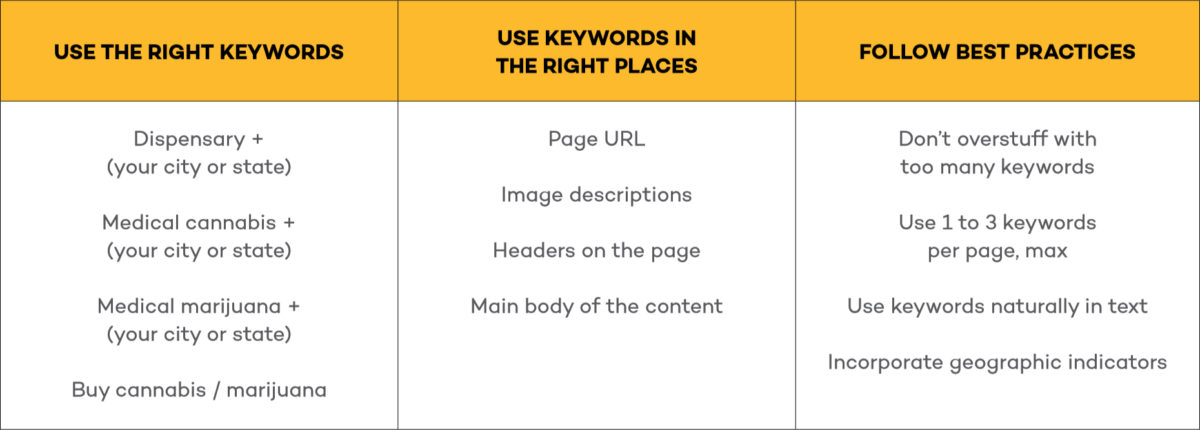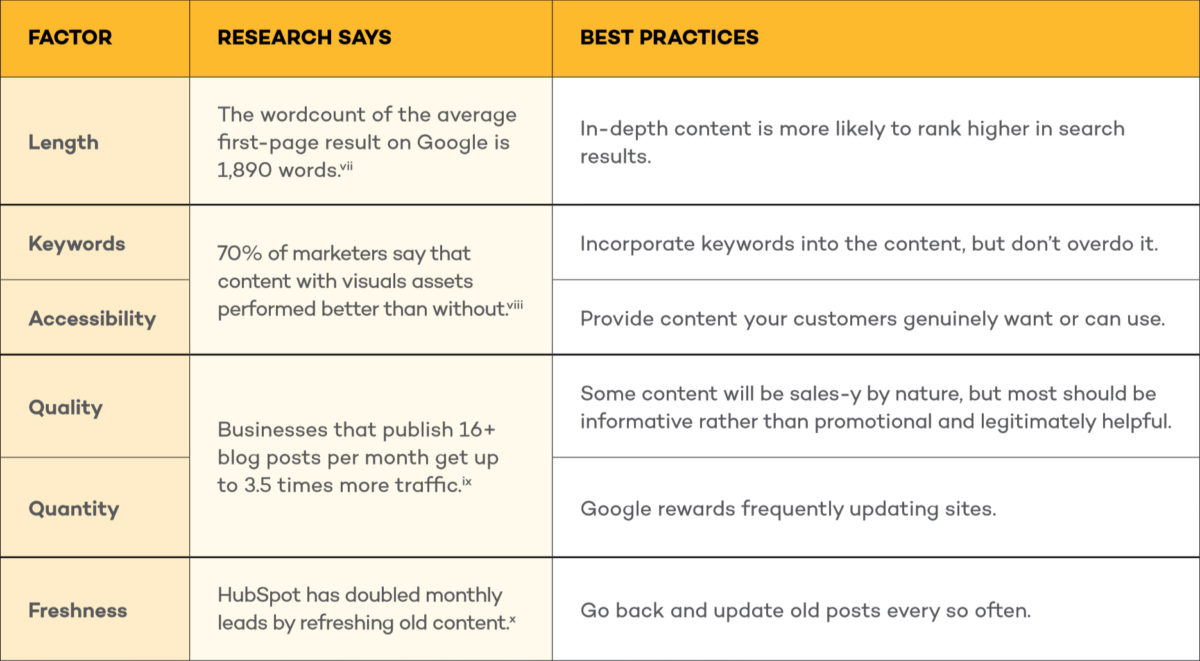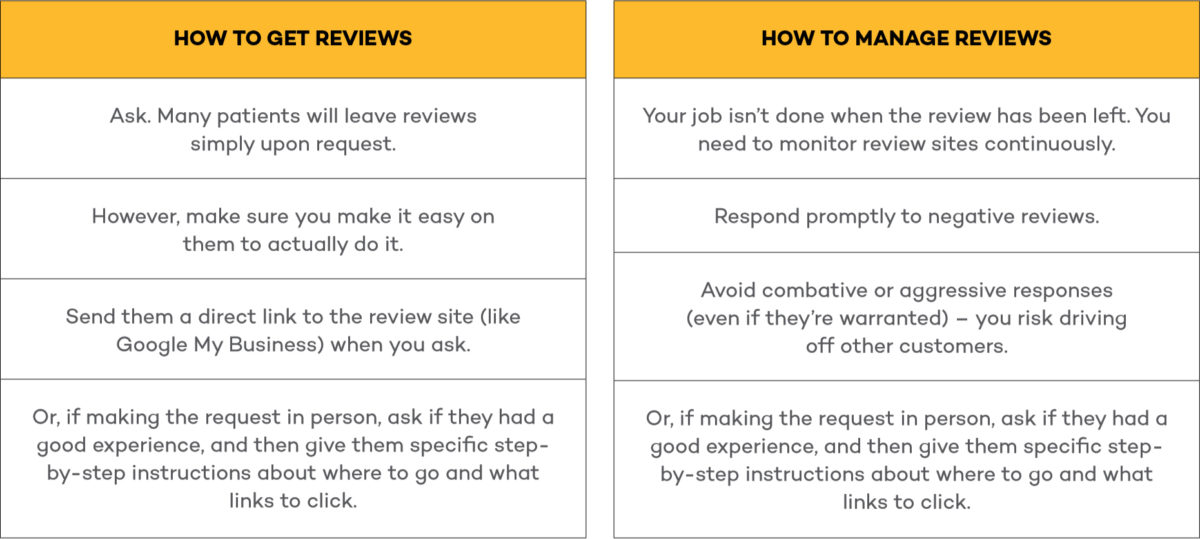SEO
Free SEO Analysis
SEO Services
Content Marketing Services
Local SEO
Link Building Services
Specialized SEO Services
PPC
REPUTATION MANAGEMENT
Free Reputation Management Analysis
Reputation Management Services
Review Management Services
Specialized Reputation Management Services
CEO Reputation Management
Brand Enhancement
Business and Directory Listings
Comprehensive Reputation Management Audit
SOCIAL MEDIA
Free Social Media Analysis
Specialized Social Services
WEB DEVELOPMENT
Free Website Analysis
Web Design Services
Mobile Development Services
Website Maintenance Services
Specialized Development Services
MARKETING AUTOMATION
Free Marketing Automation Analysis
Specialized Marketing Automation Services
Comprehensive Marketing Automation
INDUSTRIES
ABOUT DMA
WHITEPAPER
8 Steps to Acquire Patients for Medical Marijuana Practitioners
26th July 2022
Executive Summary
At present, medical marijuana is legal in 33 states and the District of Columbia
Facebook and Google do not allow drug-related promotions on their sites.
Reviews can make or break a dispensary.

Medical marijuana is a fast-growing industry that faces uniquely thorny issues, but with the right tactics, marijuana dispensaries can reap a healthy harvest of new business online.
Nationwide, the marijuana industry is blossoming in a so-called “green rush.” The market is worth billions, with nearly $9 billion in sales in 2017 alone – and that’s before California opened its market.[i] Altogether, the market is expected to grow to $21 billion by 2021; and as more states and localities legalize marijuana for recreational and/or medical use, these numbers will only continue to grow.
Indeed, the value of the medical segment is similarly substantial. Even just cannabidiol (CBD) based products, used to treat medical conditions ranging from epilepsy to chronic pain, are expected to hit $1.8 billion by 2022.
However, the industry and the dispensaries and practitioners within it face a unique constellation of challenges:
First, participants in the market – such as dispensaries where cannabis is cultivated, prepared, and distributed – face the intense competition common to all fast-growing market segments.
Then, the market faces lingering confusion and reputational concerns among prospective customers. Huge numbers of consumers could potentially benefit from medical applications, but many hesitate due to misunderstandings and stereotypes around marijuana use.
Last, but certainly not least, legal questions and constraints, given that marijuana is still illegal on a federal level in the U.S., cast a dark shadow over the industry and limit what dispensaries and others can do to market themselves and grow.
However, these challenges present great opportunities, particularly (1) to differentiate, by being smarter about online activities; (2) to build business, by grabbing a sizable chunk of that green rush; and (3) to expand market share, by convincing a wider audience of the benefits of medical marijuana.
But how? Here’s a step-by-step process to consider.
Step 1: Understand the Legalities
Marijuana, even when prescribed by a licensed physician exclusively for medical purposes, is subject to a range of disparate and often conflicting laws. Further, many of these laws govern specifically what dispensaries and medical personnel can and cannot say when marketing their services and products. It’s a thorny tangle, and the first step for any dispensary to acquire new patients is to understand the legal minefield in which they’re walking.
Verify local laws.
Before anything else, ensure your business is covered by state and/or municipal regulations that explicitly permit some form of marijuana production and sales. At present, medical marijuana is legal in 33 states and the District of Columbia (10 of these also allow recreational marijuana use).[ii] However, the laws governing marijuana may differ in scope. For example, they may differentiate products containing Cannabidiol (CBD) from Tetrahydrocannabinol (THC), the two major compounds found in marijuana. CBD is typically non-psychoactive, or at least less psychoactive than THC. Some areas allow products with CBD but not THC; others allow products with low amounts of THC (e.g., less than 0.03%).
Understand federal law.
Federal law is straightforward: marijuana is illegal; and under the Controlled Substances Act, it is listed as a Schedule I drug alongside heroin and cocaine. That makes it a felony offense to advertise for the sale of cannabis. This immediate raises the question of how a dispensary can promote its services and products, even if it’s legal locally. In turn, this makes certain online lead generation avenues treacherous for dispensaries, as we’ll discuss further in the next section. "The whole industry is under a cloud because no one knows to what extent [the Department of Justice] is willing to interfere with the states," says Keith Stroup, co-founder of the National Organization for the Reform of Marijuana Laws.[iii]
Step 2. Favor SEO over paid search
Facebook and Google do not allow drug-related promotions on their sites. Google, for example, bans advertising on its platform of any substance that alters “mental state for the purpose of recreation” and specifically names marijuana.[iv]
“You would think that Facebook and some of these online platforms [would be] the ideal platforms for these products because you can target only legal states, target only people over 21,” says Aaron Smith, executive director of the National Cannabis Industry Association.[v] Most likely, such policies are the platforms’ attempt to comply with federal law and entirely side-step the uncertainties around “locally legal, federally illegal.”
This makes paid search an uncertain means for a dispensary to promote its services, though it may still be possible to use them if your advertising is oblique and very carefully worded. Regardless, you run the risk they will take your ads and business pages down at any moment, and your resources would likely be better dedicated to focusing on a good search engine optimization (SEO) program to cultivate organic search traffic. Google and other search engines won’t stop its users from navigating to your site if they find you after they’ve performed a relevant search. And SEO leads offer a superb 14.6% average conversion rate, versus a scant 1.7% close rate for print ads.[vi]
Step 3. Pick the right keywords
If your dispensary is going to target an SEO strategy – and you should! – you need to start by picking the right keywords. Your website will appear only if you’ve chosen and used the same keywords and key phrases that your customers use to search for you in the first place. That might include terms like “buy cannabis” or “medical marijuana dispensary.” Because most of your customers are likely local, it’s usually smart to incorporate geographic indicators into the keywords, like “cannabis dispensary san Francisco” or “buy medical marijuana colorado.”

Step 4. Create compelling content.
The most important place to use those keywords is in the content on your site. Content offers multi-layered benefits: (1) it’s one of the most powerful factors affecting search rank; (2) excellent content creates “linkbait” that attracts organic links naturally, further boosting search ranking; and (3) it presents an excellent opportunity to provide genuine value to customers. For example, if you can provide content that answers common questions and provides useful education about the medical application of cannabis, peppered with your chosen keywords, Google will reward you with a higher ranking in the search results; and potential customers will flock to your site just to consume the high-value content you’re offering. Through this mechanism, dispensaries can use content to establish themselves as reliable, credible, and trustworthy experts and sources. Consider the following success factors.

Step 5. Use the content to dispel myths and build your brand.
In fact, the educational aspect of good content has even more benefits for dispensaries. More than in other industries, you may encounter hesitation in prospective customers due to reputational issues, e.g., some customers want the medical benefits but fear becoming associated with “pot culture.”
However, modern medical marijuana use-cases are well-establishes and researched. Medical applications aren’t about getting high, or even solely about managing chronic pain (which is itself an excellent use-case). Cannabis has been used to successfully treat – or at least shown promise in dealing with – epilepsy, multiple sclerosis, Alzheimer’s, Crohn’s disease, nausea, and more.
Present science-backed evidence of medical outcomes and de-construct negative stereotypes. For example, cannabis company “MedMen” created a “Forget Stoner” campaign intended to specifically break down the “stoner” stigma.[xi] They showcased respected figures who use marijuana to deal with a variety of conditions. Similarly, you can use web content to dispel myths and promote education.
Step 6. Get listed in directories.
So far, we’ve discussed how paid search on platforms like Google is a risky venture; SEO represents a much more reliable means of generating web traffic. Another powerful step you can take is getting listed in relevant directories.
Adding your dispensary to appropriate directories offers multi-layered benefits. For one, it makes your business discoverable online to people who might not find you through a direct search. For another, it creates quality links pointing at your website that can strengthen your own search ranking. Further, each of those links serves as a doorway into your site, boosting traffic.
Start with Google itself by adding a listing for your dispensary to Google My Business (GMB). Then move on to industry-agnostic directories, like Yellow Pages, Yelp, FourSquare, etc. Finally, use cannabis-specific or -friendly directories like those listed in the sidebar.
When adding your business to these sites, take care to ensure that your “NAP” (Name, Address, and Phone Number) match exactly across all platforms and sites, e.g., don’t put “Road” on GMB but use “Rd” everywhere else. You may compromise the SEO benefits with Google otherwise.
Step 7. Manage Reviews
Reviews can make or break a dispensary. They are always prominent in search results, and why would someone choose you over a better-reviewed competitor? Indeed, 92% of consumers read and utilize online reviews when looking for a local business, and 88% trust online reviews as much as a personal recommendation.[xii]
And the truth is, good reviews have a tangible impact by boosting business: Positive comments online from happy customers produce an average increase in sales of 18% and, further, those consumers are likely to spend 31% more because of positive reviews.[xiii]
The flip is also true: bad reviews legitimately drive business away: a single negative review can drive away approximately 22% of customers, while three negative reviews can drive away 59% of the customers.[xiv]
Bear in mind, this is perhaps even truer of in the medical field than in general. In 2018, almost 72% of patients used online reviews as their first step in finding a new doctor.[xv]

Step 8. Get help.
At last we come to final step, and it may be the most important. Everything described so far in this paper is a lot, and it’s not even everything. We barely even mentioned link-building, for example, despite it being a major component of any successful SEO initiative.
Effective digital marketing requires its own expertise separate from medical expertise. Many dispensaries are expert in the application of cannabis for medical relief from a variety of conditions, but their knowledge falters when it comes to diagnosing and treating online customer acquisition problems. If nothing else, they may struggle to find the time and personnel to invest in a successful patient acquisition strategy.
Absolutely, cannabis dispensaries can do a lot to promote themselves online without outside help. But to really stand out in an increasingly crowded field, consider outsourcing to those who can quickly, knowledgeably, and deftly help your website shoot to the top of the search results.
[i] https://money.cnn.com/2018/01/31/news/marijuana-state-of-the-union/
[ii] https://medicalmarijuana.procon.org/view.resource.php?resourceID=000881
[iii] https://money.cnn.com/2018/01/31/news/marijuana-state-of-the-union/
[iv] https://support.google.com/adspolicy/answer/6014299?hl=en
[v] https://www.washingtonpost.com/news/business/wp/2018/04/05/even-where-its-legal-to-sell-marijuana-its-hard-to-advertise-it/?utm_term=.d27bada6e2e5
[vi] https://www.searchenginejournal.com/seo-101/seo-statistics/
[vii] https://backlinko.com/search-engine-ranking
[viii] https://contently.com/resource/libris-visual-content-report/
[ix] http://blog.hubspot.com/marketing/blogging-frequency-benchmarks
[x] https://blog.hubspot.com/marketing/historical-blog-seo-conversion-optimization
[xi] https://www.washingtonpost.com/news/business/wp/2018/04/05/even-where-its-legal-to-sell-marijuana-its-hard-to-advertise-it/?utm_term=.d27bada6e2e5
[xii] http://searchengineland.com/88-consumers-trust-online-reviews-much-personal-recommendations-195803
[xiii] https://smallbiztrends.com/2017/04/importance-of-online-reviews.html
[xiv] https://www.brightlocal.com/2017/03/15/the-impact-of-online-reviews/
[xv] https://www.softwareadvice.com/resources/how-patients-use-online-reviews/
Our Sales team